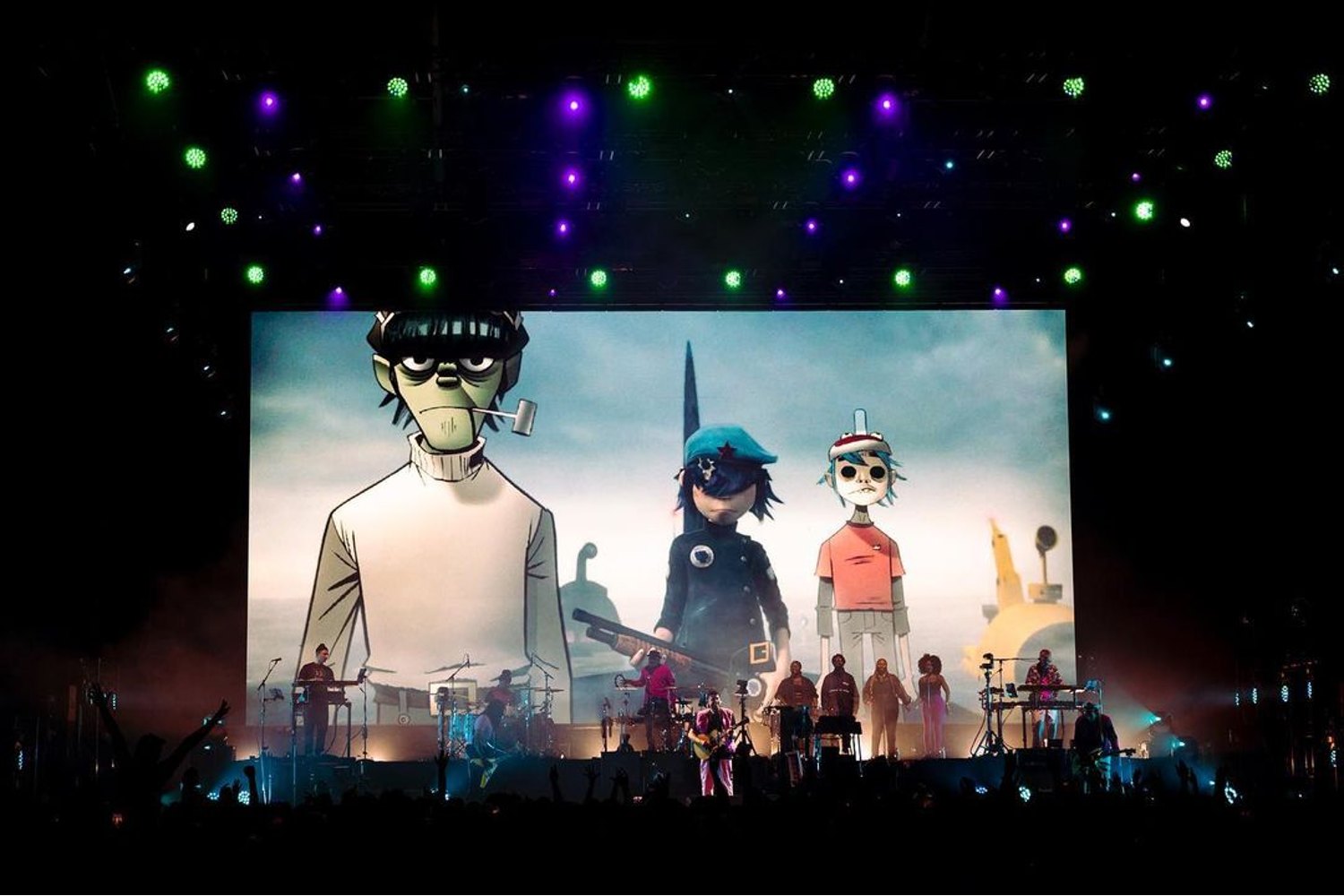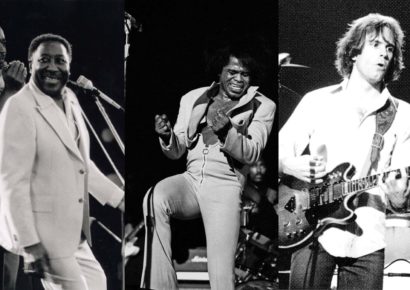From the mesmerising animated screens of the Gorillaz Cracker Island performances, to the intimacy of Nirvana MTV Unplugged - we're breaking down what makes stage design look great.
Stage design for live music performance is an art form for which accuracy is key. Just like the miniature Stonehenge in This Is Spinal Tap (1984) it’s important to know the difference between inches and feet.
Read more gear features, artist interviews and how-to columns here.
This is not lost on the teams of stage designers who work tirelessly to ensure that when you take your first look at an artist’s performance space, you let out a big Keanu Reeves “whoa”, instead of being confused as to why your grand set-piece on barely reaches your knee.
Visuals
An audience will often take being able to see performers from the cheap seats for granted, with screens being an important tool in outdoor festivals and stadium sell-out crowds. However, with technological advances, and the modern stadium goer’s certain expectation of theatricality, screens provide an opportunity to do a whole lot more than just broadcast a live feed of the performance.
Graphics including animations and pre-recorded clips build out an artists performance, with each song performed often including a choreographed and unique visual setup.
Due to the nature of today’s projection and screen based technology, there is a lot more capability. Screens can even be shaped to more than just a simple flat behind the performers, and can be custom built into many shapes and sizes including curves. This allows for even more freedom in the pre-production design phase and allows for artists to give the audience a more unique experience than ever before.
Filtered live feeds, animations and graphics all work together during the performance. For a virtual band like Gorillaz, visuals are of the utmost importance to have the characters present in their live shows. Gerald Scarfe’s animations played throughout Pink Floyd’s tours in the past and Roger Waters has continued to use these animations in his solo tours today, complimenting the music performed on stage with the memorable cartoons.
Lighting also plays a key role in the look of the stage, variation and control being two very important elements here. The use of multiple colours, intensities, movement and the ability to dictate where and when lighting is used all plays into the craft of live performance. Lighting is more than just being able to see the performance on stage, it is a tool used in stage design to establish a mood and atmosphere, not to mention, making the talent on stage picture worthy.
Size Matters
Scale is an important factor in stage design. Making the most of the space and adding extra dimension can heighten (pun intended) the experience for both the performers on stage and the audience. With a smaller space comes the opportunity for intimacy and allows for the artist to connect more with the audience. A smaller venue, or smaller stage can be arranged to cater for this. Some of the best gigs around the country are performed on stages smaller than some people’s bedrooms, and this is because despite the limitations, the artists make the most of their environment.
On the other hand, some performances have been built with millions of dollars in production value and as much space possible. These performances are at larger, purpose built arenas such as football stadiums or even large open properties like wineries. These venues require a lot more behind the scenes preparation, months and even years in advance to transform them one day and pull it all down the next safely. The idea is to ensure everyone gets their money’s worth as stage designs here are large scale. Massive bands such as KISS take arena rock shows to another level with multiple elements on massive stages, such as moving platforms and wire work. The Rolling Stones famously have a new purpose built stage design for every world tour, pushing the boundaries of theming at a concert, that have gone on to be just as memorable and iconic as the songs being performed.
Positioning of the stage at these arena shows is also important to design. In-the-round stages have the performers central to the arena, with the audience being positioned around them as opposed to the traditional front to back setup. Foo Fighters, Muse and most famously U2 have all played in this format at massive arenas like Wembley Stadium. This development in design means there is no backstage to hide behind and gives the opportunity to sell more tickets, but also for the performers to reach their fans in a unique way, with more autonomy.
Setting The Tone
No doubt one of the biggest impacts of a great stage design is an emotional one. A simple acoustic set might only require a chair and a nice backlit curtain, whilst a massive stadium rock show could require giant gaudy inflatables and large practical effects. Both create a different reaction on an audience member, but are meticulous and accurate in provoking it.
MTV’s famous Unplugged series of concerts often has low key lighting, candles, velvet curtains and flowers or greenery to match the more emotional and raw acoustic renditions of the performers songs. Moody and atmospheric, there is a reason they are fondly revisited years later, and this is only enhanced by the matching stage craft from the design teams involved.
On the other hand, a band like AC/DC will pack their ginormous stadium stages with trains, church bells, cannons and even the famous Rosie (in inflatable form), not to mention the excitement of smoke, pyrotechnics and lasers as a given. By taking one look at that stage, I’m sure you would know you are in for a loud and ludicrously fun night.
Up and coming artists and experienced pros alike know the importance of great stage design. It can be as simple and cost effective or as lavish and over the top as it needs to be, but there is no doubt when it makes an impact on an audience it is worth all the effort. The best stage design will tell a story and leave the artists fulfilled and the audience with a lasting memory to cherish forever.
Read more about the stage design of Pink Floyd and other iconic artists here.







